This headdress functioned as a “skull cap” and was accompanied by other articles used to decorate the head profusely. Continue Reading
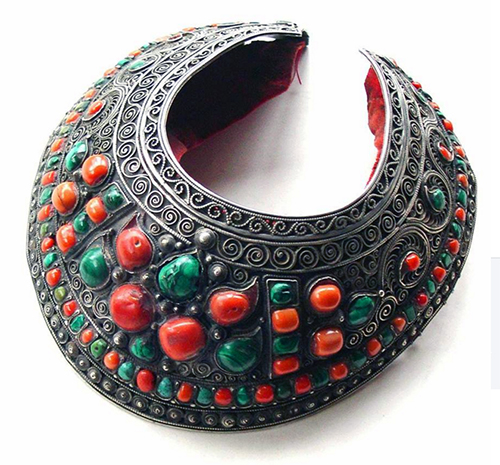

This headdress functioned as a “skull cap” and was accompanied by other articles used to decorate the head profusely. Continue Reading
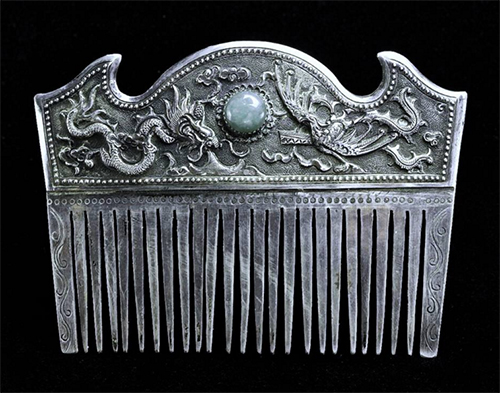
This comb is decorated on both sides with precise and sharp, nicely chased scenes of a dragon facing the phoenix, a markedly Chinese aesthetic. The symbolism of the dragon and phoenix suggests that this may well have been a wedding present. Continue Reading
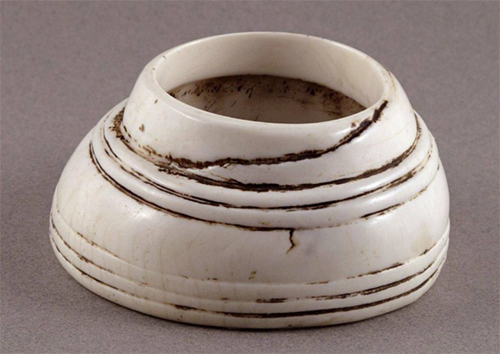
These bracelets are traditionally worn over the Tibetan plateau of the Himalayas, but especially in Ladakh. They are also made in silver. The idea of using a conch shell for an arm band is also found elsewhere, but not in this particular form. Continue Reading
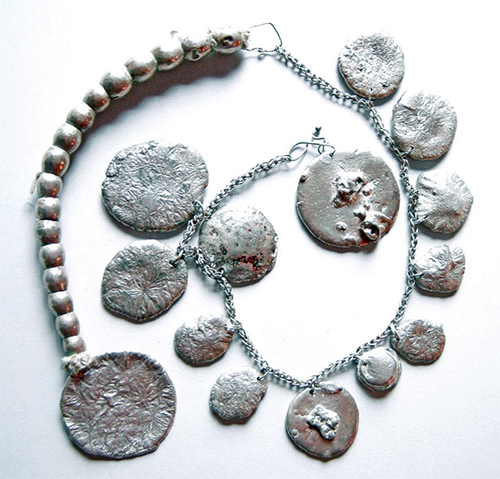
The Kayan Lahwi, or Padaung women of Burma wore brass coils around their necks, which pushed down the collar bone and compressed the rib cage to make the neck appear longer. They also made necklaces, which consisted “of high-grade silver barrel-shaped beads at the back, multiple chains, and several silver discs, which are examples of… Continue Reading
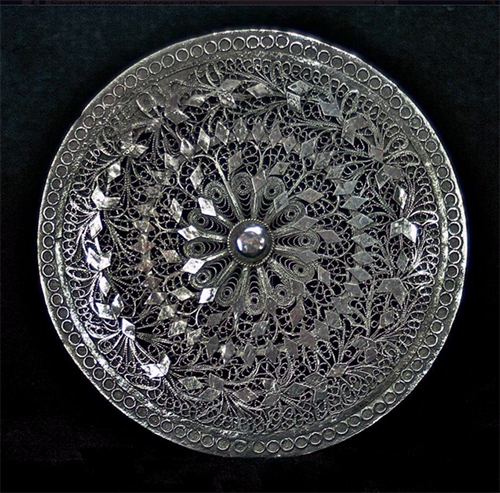
This silver disk was attached to the top of a cap or hat. It measures 13 cm in diameter. The fine filigree is particularly striking and clearly visible. We believe that it was possibly made in Denizli Province. Continue Reading
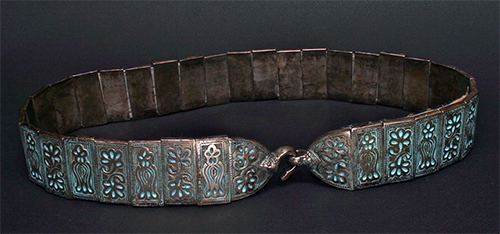
The Bulgarian maker of this belt used billon and verdigris to keep the cost of production down, as much of the population was not wealthy. Continue Reading
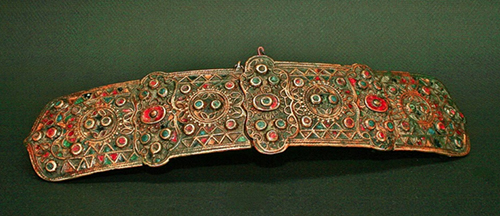
This piece has a rustic look because it was made in a country where few people were well-off. The cost of production was further kept down by using infill in the places where one might expect stones, even those made of glass. In its very use of simple, inexpensive materials, the piece evokes a rural… Continue Reading